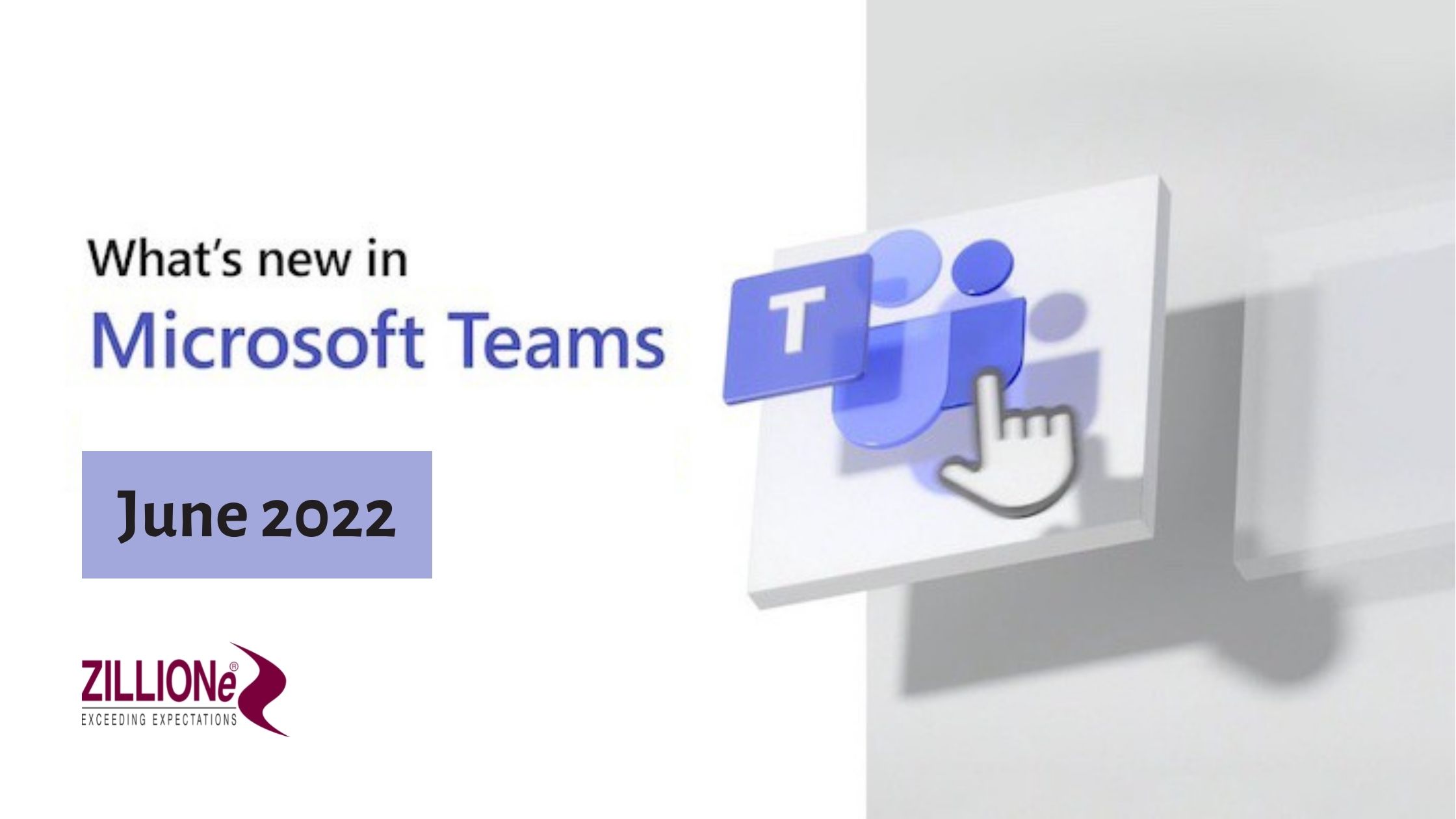SAGE 300 – Seamless data sync between GL and Subledger

Art of Data Mapping
Generally, you want to keep your accounting system as simple as possible. Modular ERP systems like Sage 300 ERP have a great breadth of functionality, but most importantly General ledger (GL) integration mapping those information’s is crucial in order to get the best result of the system.
General ledger (GL) is the heart and brain of any business accounting software and SAGE 300 ERP system is not an exception. All transactions posted in sub ledgers of Sales, Purchase, Account Receivable/Payable Are ultimately transferred to General Ledger for accounting.
Below is a data flow diagram showing how all the other modules feed G/L. Then G/L has sufficient information to provide a complete audit history of a company as well as all the data to prepare Reports.
Pain of Account Reconciliations

The finance department is most organizations is coming under increasing pressure to transform and streamline the finance close and report functioning while continuing to maintain the integrity of the financial statement and close process. A key part of this process includes the completion of details account reconciliations. Which can be a major bottleneck in the close process. The necessity for understanding and certifying and account balance and its transactions with other modules is prompted by regulatory and audit control requirements.
How many of you struggle to balance your General Ledger to your Account Receivable or Account Payable ?
How many of you aware that SAGE ERP 300 GL transaction listing would show Transitions description , Vendor name, Payment voucher number and Check number for an A/P Payments?
If you not aware It There is a way to do that for future transactions.
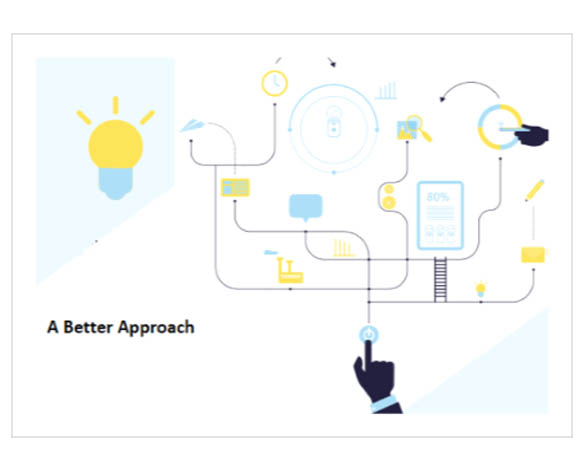
Every sub-module in Sage 300 has a program icon called “GL Integration” in the setup area of each module.



This program not only controls and maintains posted transactions to the General Ledger it also defines the source codes, shows the last posting sequences, when and how transactions are posted and lets you control what information is posted to the GL Detail Comment, G/L Description and G/L Reference is listed in the “Transaction” tab as long as you have “Do Not Consolidate” selected in the dropdown for the Consolidated G/L Batches.
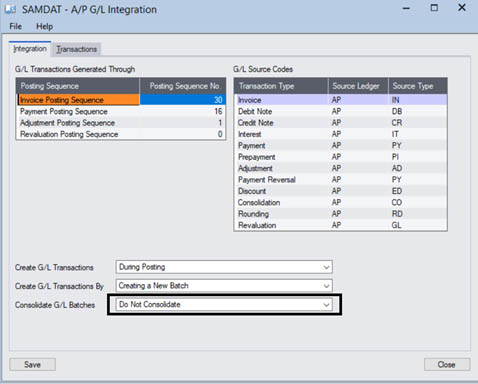
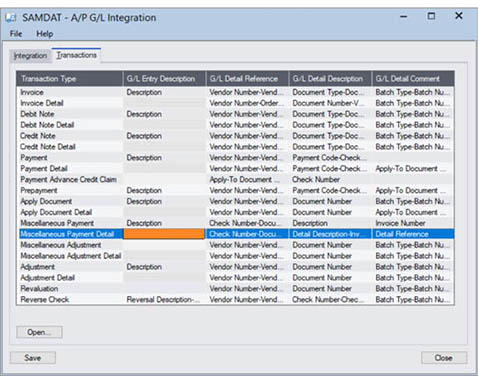
Let’s look at an accounts payable Miscellaneous Payment Details to illustrate how this transaction is posted to the G/L Transactions – “Batch List” and then printed on the G/L Reports – “Transaction Listing” report.

GL Integration Mapping on Miscellaneous Payment Details
You can assign one or more pieces of information (segments) to each field, provided that the combined length of the segments and separators does not exceed 60 characters.
Fields exceeding this limit will be truncated when you post general ledger transactions.
1) Miscellaneous Payment Details – G/L Details Reference
Change the dropdown G/L Transaction Field to “G/L Detail Reference”, highlight “Remit To, Document Number and Check Number” , click the button “Include” and then “Save”
2) Miscellaneous Payment Details – G/L Details Description
Change the dropdown G/L Transaction Field to “G/L Detail Description”, highlight “Detail Description and Invoice Number” , click the button “Include” and then “Save”
3) Miscellaneous Payment Details – G/L Details Comment
Change the dropdown G/L Transaction Field to “G/L Detail Comment”, highlight “Detail Reference” , click the button “Include” and then “Save” In order to save this setting everyone has to be out of relevant modules and make sure you have a backup.
Next time when you enter an A/P Miscellaneous Payment as shown below and posted to GL then you will see the result on G/L Journal Entry and GL Transaction Listing Report. While This information also appears on Accounts Payable posting journals.
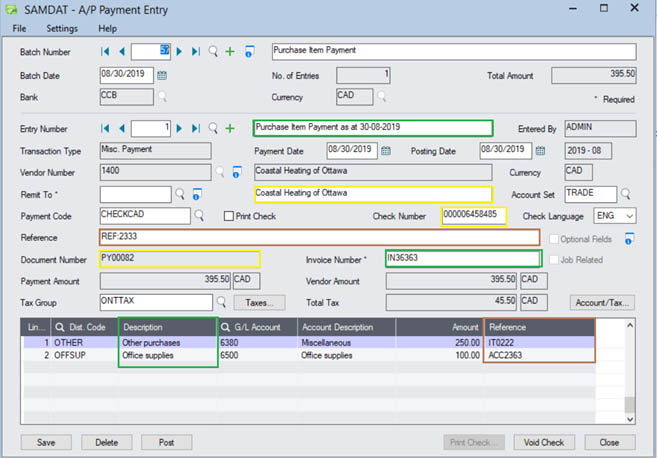
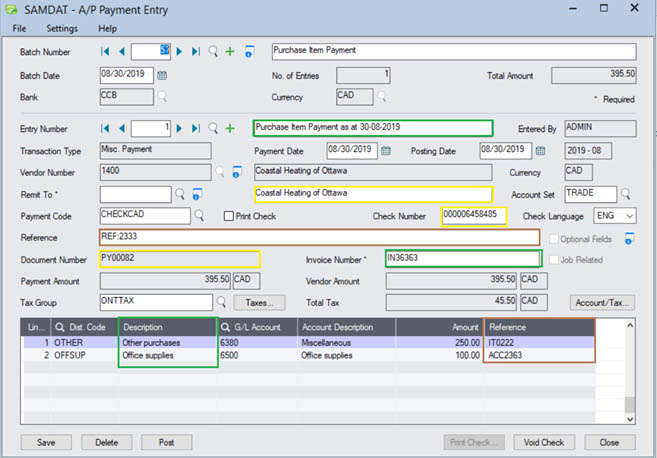
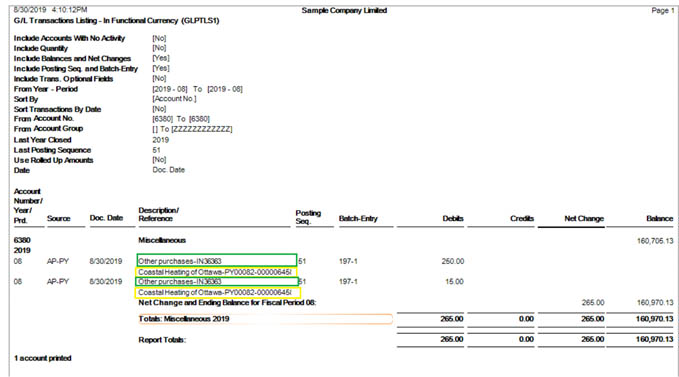
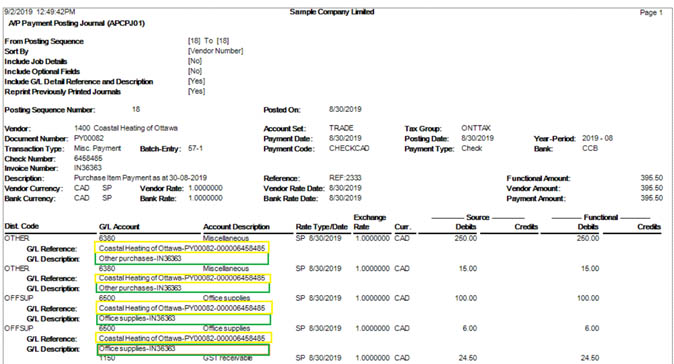
Benefits of G/L Integration.
So, We have shown the Important of putting G/L Integration in place has provided you with more information which is more accessible for audit history of a company, as well as it may easy for details account reconciliation process between modules while enables analytics tools to produce actionable insights and prepare Reports.
Most of the time you may neglected this excellent function on SAGE 300 and now onward , Let’s move forward.
In the News…
More Blogs…
ZILLIONe is the Silver Sponsor of D365 SRI LANKA
Dynamics 365 Saturday is a free Technical & Strategy Event Organised by the Microsoft Dynamics Community MVP’s For CRM and ERP professionals, technical consultants & developers. Learn & share new skills whilst promoting best practices, helping organisations overcome the challenges of implementing a successful digital transformation strategy with Microsoft Dynamics 365.
ZILLIONe Launches Advanced SAGE Security Modules
Technology based enterprise-wide business applications and systems solutions provider, ZILLIONe recently launched their latest version of SAGE 300 ERP 2018 (v6.5) and SAGE advanced security modules. Equipped with the latest ERP and enhanced capabilities to boost productivity and profitability with sophisticated workflow features and flexible personalization, SAGE 300 2018 is a fully fledged ERP which can cater to almost any business domain.
ZILLIONe Technologies Hosts Partner Awards Night
ZILLIONe Technologies (Pvt) Ltd., exclusive distributer of Jabra Products in Sri Lanka, hosted it’s first ever partner awards night recently at the Kingsbury Hotel, Colombo. Which brought together all valued partners under one roof to appreciate their esteemed contribution with regards to product positioning and dealings in the market. Peter Jayaseelan Managing Director – India and SAARC addressed the gathering and the set the tone on the 2018 focus plan. Along with CEO of ZILLIONe Technologies (Pvt) Ltd, Kanchana Silva.
ZILLIONe Launches Latest Sage 300 ERP
Technology based enterprise-wide business application and systems solutions provider ZILLIONe recently launched SAGE 300 ERP V6.4 as a part of its annual introduction of the latest versions of SAGE ERP. The launch took place at the Movenpick Hotel, Colombo and saw the presence of some of the organisation’s key corporate clients, IT heads, finance heads and other key decision makers at each business areas.









